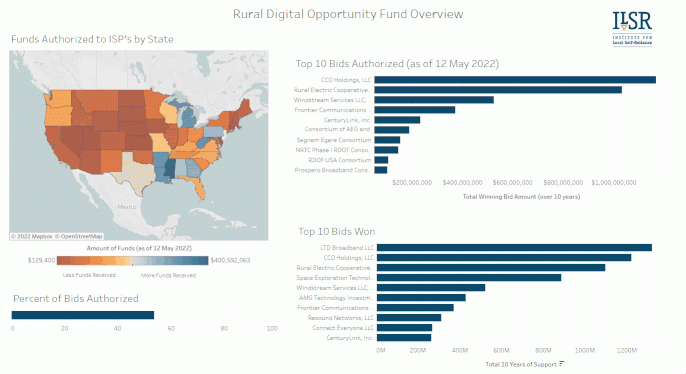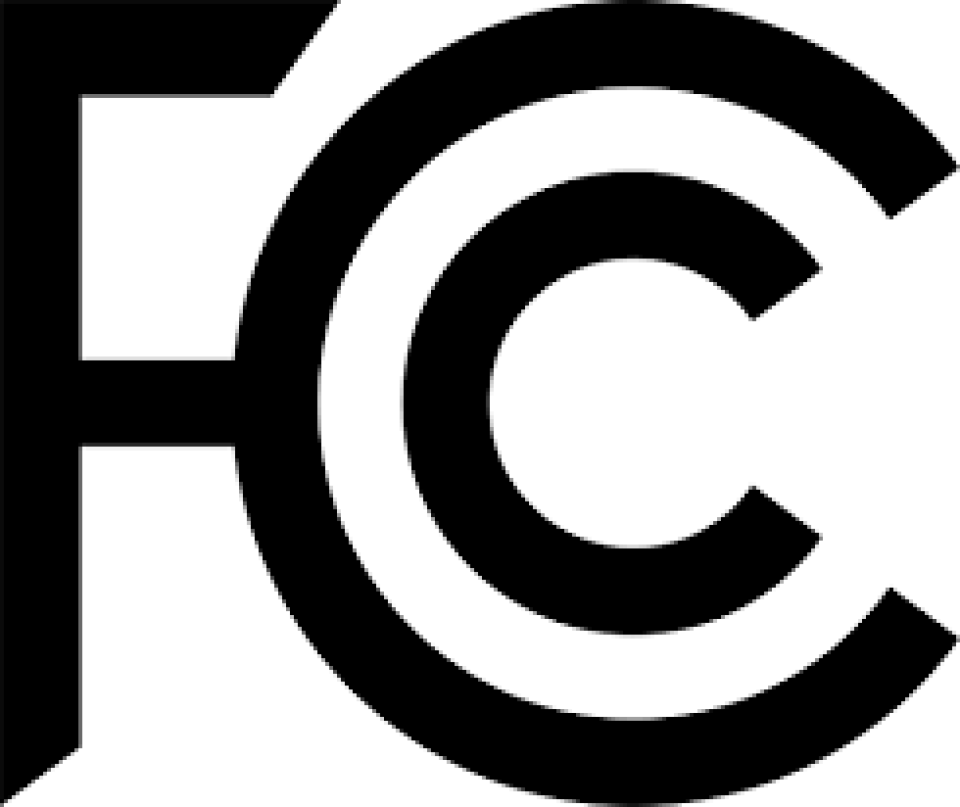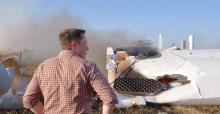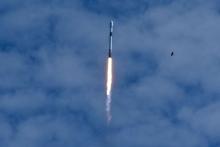
With so much attention on how the Broadband Equity, Access, and Deployment (BEAD) Act is continuing to unfold (including from us), it’s important to remember that the FCC’s Rural Digital Opportunity Fund (RDOF) is still in the process of authorizing bids from its $9.2 billion auction conducted in December of 2020. This is for two reasons: first, because areas for which winning bids are authorized will have a much harder time going after BEAD funding. And second, because after the auction closed there was an array of bids by a variety of Internet Service Providers (ISPs) which looked problematic to us - either because they were for technologies that don’t represent equitable, pragmatic solutions in the long run, or because they were won by ISPs ill-prepared to scale to the level they would need to to fulfill obligations.
New Resource: RDOF Tracker
The Rural Digital Opportunity Fund was designed to bridge the digital divide in rural America by incenting deployment to households lacking access to basic broadband speeds, defined as 25/3 Megabits per second (Mbps). Phase I was operated as a reverse auction over many rounds in December of 2020, with ISPs bidding on locations throughout the country. The lowest bids won, and committed those providers to completing new connections to those addresses using RDOF support spread out over ten years.
Today we’re releasing a new resource we hope will be helpful in keeping tabs on which providers have gotten money, how much has been authorized, and in which states. The dashboard below is built on the Tableau platform, and shows the real-time results according to the latest authorization spreadsheets released by the FCC.
Click here to open a full-size version of our RDOF Tracker in a new window.
The real-time map in the dashboard above shows the range of funding that will go to deployment projects in each state. It’s important to remember here that unlike BEAD, the RDOF funds go directly to the ISPs, and that they get those funds over 10 years (and have to finish building by the end of year eight). Dark orange represents states where the least amount of funds will eventually go, with Kansas slated to receive the least of all fifty states at $129,000. Dark blue represents states where the most funding will go, with the top spot taken by Mississippi, which will see investment of more than $400 million. Lighter shades of both colors show the states that will see investment levels that approach the median of RDOF funding that will go out: about $200 million.
The dashboard also contains graphs which show the percentage of funding disbursed so far, as well as the top ten original bidders and the ten bidders which have received the largest amount of support so far. In the graph, CCO Holdings represents the collective bids of Charter Spectrum; most of the other provider names are relatively clear, with a few consortiums mixed in).
Each component of the dashboard has additional data that can be explored. For the full-size, interactive version of the dashboard, click here. Just click a state or graph, hover over it, and click the “View Data” popup. A separate browser window will open, and allows you to (on the left hand axis) do things like expand applicant-level data for each category. Once there, in the “Show Fields” option at the top right, you can select any number of column headers to add those data to your table, and then click the “Download” option in the top right to use those data however you like. For instance, if you were interested in Minnesota's big-picture results, the dashboard lets you quickly build a custom, downloadable spreadsheet of the highest bids in descending order, which ISP or consortium won, and how many locations it is getting support to serve over ten years. See the GIF below.

This function works for all of the data in the dashboard, including the map and each of the charts. It will be updated when the FCC releases new authorized bids.
Big Winners So Far
To date, 54 percent of winning RDOF bids have been authorized for 2.76 million locations, totaling slightly less than $5 billion in support over the next ten years.
Most of the biggest bid winners have seen significant authorizations, with the exception of two. Charter Spectrum (CCO Holdings) has been authorized for almost $1.2 billion, representing the vast majority of its winnings. Windstream, Frontier, and CenturyLink (now Lumen) have also gotten most of the funds they bid for. Likewise, the three big electric cooperative consortiums have also collectively gotten more than $1.2 billion.
Trouble for Two
Of the ten biggest winning bidders, two important ones have yet to receive money thus far. LTD communications was the single biggest winner, getting more than $1.2 billion for 528,000 locations across fifteen states. It hasn’t gotten any funds released yet. Further, almost 9,600 census blocks have been placed in default by the FCC; they’re spread across most of the fifteen states the ISP won bids in, but are most heavily concentrated in Oklahoma and Texas. It represents a significant chunk of the 34,000 defaulted census blocks announced so far. LTD also faces state public utility commissions which have denied the regulatory status the ISP needs in order to get the RDOF funds.
Likewise, Starlink, which was the fourth-highest winner at $885 million, hasn’t received any money yet either. None of its census blocks have been placed in default as of yet.
The Big Picture

There are also other things to keep an eye on. There are some early arguments by policy experts (covered in our Connect This! show) that monopoly providers like Charter Spectrum will be going after BEAD funds at the state level as a way to shore up the unusually low bids they made during RDOF to protect their territory (which they may have already been planning to build to anyway, but which has the impact of keeping competitors out of their service area).
Lastly, there is indication that the BEAD NOFO rules from NTIA, if followed verbatim by the states, will require that states subgrant new BEAD money to overbuild areas where Wireless Internet Service Providers (WISPs) just won bids to use RDOF money to bring service via deployments using unlicensed spectrum to those territories. How this will play out no one yet knows, but it’s indicative of the FCC’s failure to set policy that results in the construction of legitimately future-proof networks, thereby also calling into question its ability to fulfill its charge (layed out in the 1996 Telecommunications Act) to ensure that investment is directed in as efficient a manner as possible. It’s also yet another example of bad federal policy which results in taxpayer’s dollars being used to build the same areas twice before 2026.
For more about RDOF and its impact, listen to Episode 448 of the Community Broadband Bits podcast, where Christopher talks with Conexon partner Jonathan Chambers.
The RDOF Tracker Dashboard was built and will be maintained by GIS Researcher and Data Visualization Specialist Christine Parker. Email christine@ilsr.org or ry@ilsr.org for questions or comments.
Header image by Алекс Арцибашев on Unsplash






